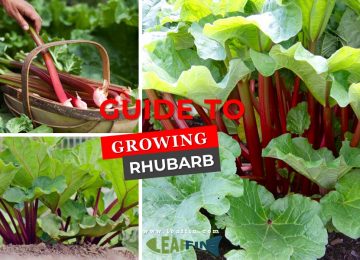Table of Contents
Sowing Peppers
Pepper plants love the heat, so they shouldn’t be planted outside until night temperatures will stay above 55ºF. Due to this, in most growing zones, it makes it almost impossible to grow peppers from seed outdoors because it needs such a long growing period.
Start seeds indoors in early April.
Sow 2 seeds per pot, 1/2″ deep, and keep them in a bright, hot place (around 75ºF) to be certain of good germination.
After germination (about 10 days after sowing if seeds are fresh, old pepper seeds can still be germinated it just takes longer the older they are) feed weekly with liquid fertilizer to help get them ready for the outdoors. When it is clear which plant is the stronger of the 2, pinch out the weaker one allowing the remaining plant to get all of the nutrients.
For the best peppers, add aged cow manure and/or compost to the planting soil and turn soil over at least 1′ deep. They do best in well-aerated soil.
Planting Peppers
A few weeks before night temps remain above 55ºF, on warm sunny days, set pepper plants outdoors to acclimate them and avoid future sun-scald. Place outdoors for only a 2 hour time period at first and gradually increase the time.
When temperatures remain above 55ºF, transplant peppers into the soil at 18″ intervals and give each a cutworm collar (see our homemade collars here). The best time to transplant is late afternoon or on a cloudy day to prevent scorching the young leaves. Water well.
If there is a cool June, transplant peppers into larger pots and wait until the weather warms. If you plant out in cool weather, your plants will be stunted and never produce the crop they are intended for before cool weather arrives in the fall.
Don’t plant peppers where you previously grew tomatoes, potatoes, or eggplants. All are members of the nightshade family and not only use the same nutrients from the soil but are prone to the same soilborne diseases.
Peppers need even, moderate moisture around their roots. Watering overhead when plants are in bloom will wash away pollen, resulting in low production. The best way to water is drip irrigation or a soaker hose.
Spread a thick but light mulch like dried grass clipping or hay to conserve moisture, but keep it a few inches from the plant base.
If grown as above, the earliest peppers will start needing to be harvested in July. Pick them when young and green or leave them on the plant to turn red, yellow or orange, depending on the variety. The flavor is the same no matter when you harvest.
Pepper Companions
- Plant basil with your peppers. Basil repels pests like aphids and acts like a fungicide.
- Planting with Marjoram benefits the health and growth of the pepper plant.
- Cosmos, geranium, marigold, and thyme all deter the corn earworm which attack peppers
- Borage, calendula, dill, opal basil, and thyme planted with peppers will deter tomato hornworm and tobacco hornworms that feed on peppers
- Tomatoes, carrots, and eggplant are all said to be great growing companions of peppers
Bad Neighbors
- Avoid planting fennel near peppers, it stunts the growth of peppers.
- Never plant near a Black Walnut or Butternut tree, the juglone in the tree roots, leaves, and husks are toxic to peppers.
Pests and Diseases
- Blossom drop caused by temperature change can cause little to no fruit production. It only causes a delay in fruit. When the temperatures are less extreme, production will begin.
- Sun Scald can be seen when an area on the pepper fruit becomes soft, wrinkled, and light in color. Then this spot will dry and become slightly sunken, looking like paper. This is caused by sunburn. Best controlled by being certain plant stays healthy and there is no leaf disease-causing leaf loss. Fertilize to keep the leaves healthy and plants full.
- Blossom-end rot produces a round, sunken, water-soaked spot on the bottom of the fruit. The spot gets larger, turns brown or black, and feels leathery. This is caused by a lack of calcium in the developing fruit due to it not taking in much from the soil for various reasons including damaged roots and slowed growth. Solution: water regularly, avoid overuse of high nitrogen fertilizers and manures, plant in well-drained soil, give more water at each watering to leach out salt, and don’t cultivate deeper than 1″ within a foot of the plant.
- Corn earworms produce holes that have been chewed in the fruit. Inside the fruit, you find worms that are striped yellow, green, or brown up to 2″ long. You may also see worms on the leaves. Solution: Once the worms are inside the fruit, spraying is not effective. Pick and destroy infected fruit and clear all plant debris after harvest to prevent overwintering. If worms are only on foliage, dust plant with commercial chemical and next year spray with commercial spray to prevent re-infestation. Try planting companion plants (listed above) to help deter this pest.
- Other common problems are European corn borers and tomato hornworms.

